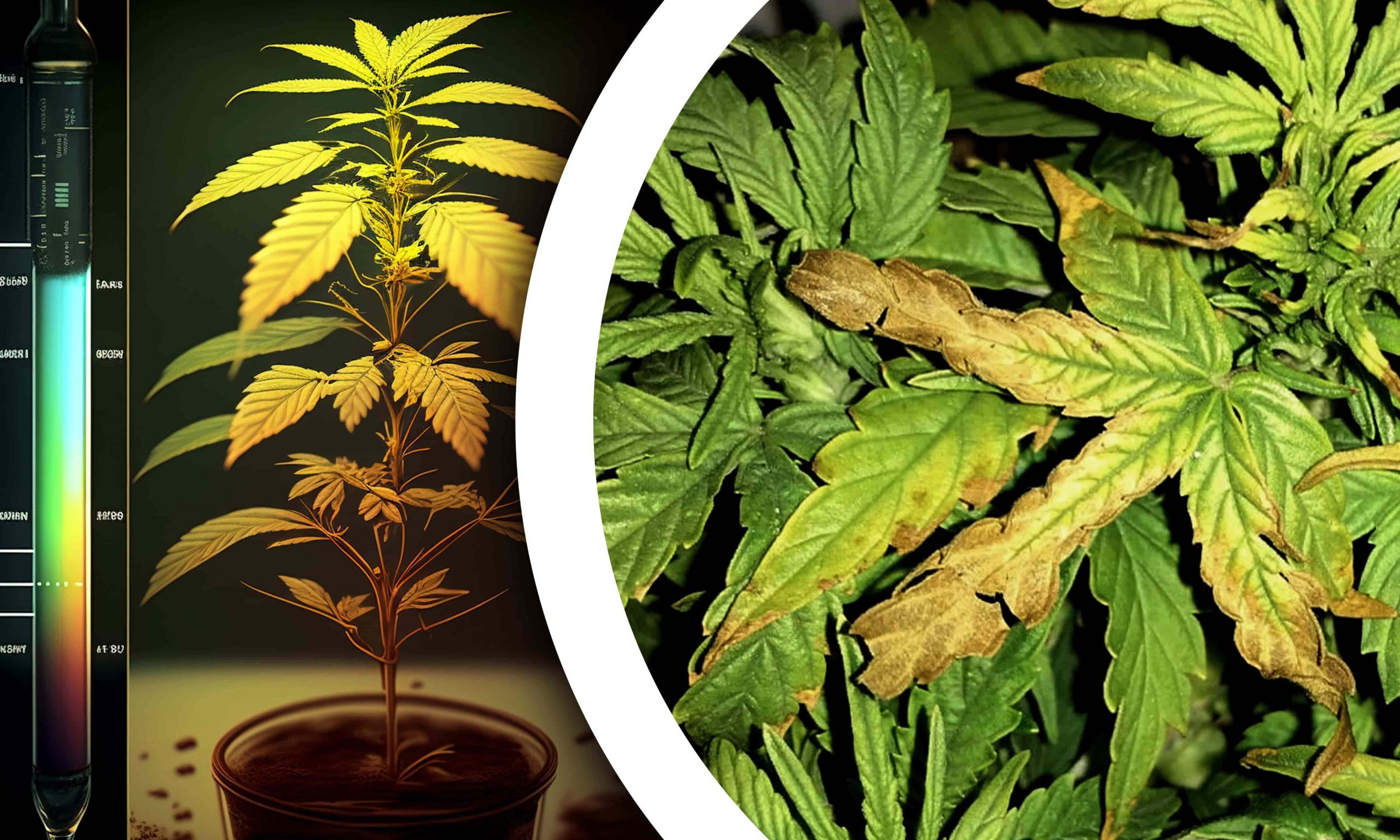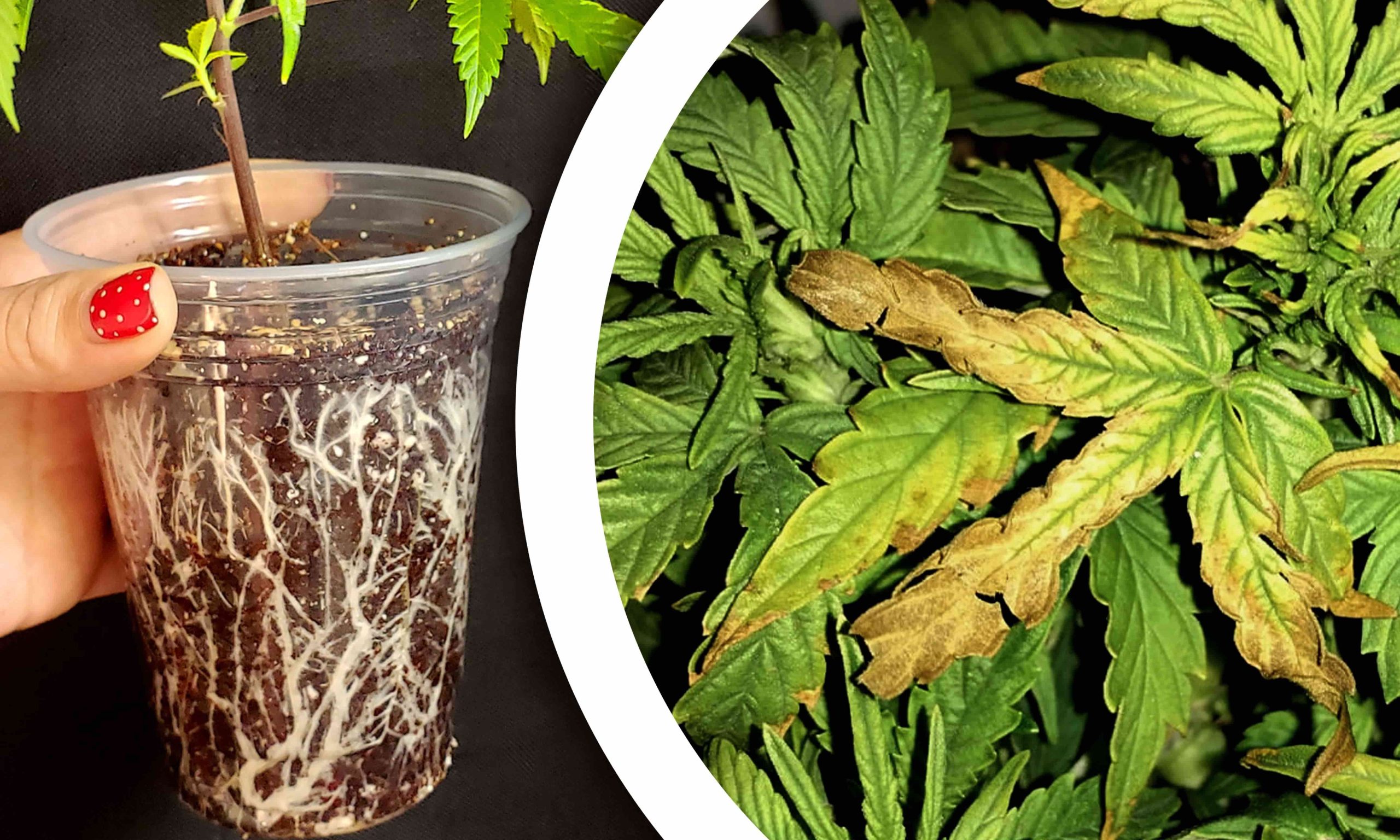Nutrient lockout is a problem for cannabis growers. It can hurt plant health and how much you harvest. It happens when the plant can’t use important nutrients in the soil, even though they’re there. This makes the plant grow slowly, and its leaves turn yellow. The buds also don’t develop well. Understanding the causes and solutions to nutrient lockout weed is crucial for successful cultivation.
What Is Nutrient Lockout
Nutrient lockout in cannabis cultivation refers to a situation where essential nutrients become inaccessible to the plant despite being present in the growing medium. In other words, it means that even when the necessary nutrients are there in the soil, the plant can’t use them. Nutrient lockout happens when factors like pH imbalance, overfertilization, poor water quality, or root zone issues stop the plant from absorbing nutrients properly. This leads to problems like stunted growth, yellow leaves, and lower yield.
Nutrient Lockout during flowering is a big worry for cannabis growers. It can stop plants from taking in vital nutrients, even if they’re in the soil. Nutrient lockout in the late flowering stage can damage cannabis plants, causing poor bud growth and producing less yield. It happens when plants struggle to get important nutrients from the soil. Keeping the pH levels right, flushing the soil, and giving balanced nutrients can help avoid and fix lockout-out issues during this critical stage.
Causes of Nutrient Lockout
Several factors can contribute to nutrient lockout in cannabis plants:
- pH Imbalance
Incorrect pH levels in the growing medium can hinder nutrient absorption. Cannabis plants thrive in slightly acidic conditions, with a pH range of 6.0 to 6.5 for soil and 5.5 to 6.5 for hydroponic systems.
- Overfertilization
Giving too many nutrients to the plant can be too much for its roots. This can cause problems with the balance of nutrients and block the plant from getting what it needs. Always follow the manufacturer’s guidelines and check plant response to avoid overfeeding.
- Poor Water Quality
Water high in salts, chlorine, or other contaminants can disrupt nutrient uptake and cause lockout. Using filtered or purified water can mitigate this issue.
- Root Zone Issues
Compacted soil, root rot, or inadequate aeration can impair root function and nutrient uptake. Maintain proper soil structure and ensure adequate drainage to prevent root-related problems.
Identifying Signs of Nutrient Lockout in Cannabis Plants
Nutrient lockout in cannabis plants occurs when essential nutrients are present in the growing medium but are unavailable to the plant. Recognizing the signs of nutrient lockout is crucial for growers to intervene promptly and restore optimal nutrient uptake. Here are common indicators to watch for:
Leaf Discoloration
- Yellowing or browning of leaves, especially at the tips and edges.
- Chlorosis, where leaves turn yellow while veins remain green, indicates nutrient deficiencies despite nutrient presence.
Stunted Growth
- Slow or halted growth, with plants failing to reach their expected size.
- Reduced vigor and vitality, with plants appearing weak.
Leaf Abnormalities
- Curling or twisting of leaves, often accompanied by abnormal leaf shape.
- Necrosis or dead spots on leaves indicate severe nutrient imbalances.
Leaf Burn
- Brown or crispy edges on leaves, resembling burn marks.
- Leaf tips turn yellow or black due to nutrient excesses or imbalances.
Poor Bud Development
- Small, airy buds with poor density and resin production.
- Premature flowering or flowering delay affects bud formation and quality.
pH Fluctuations
- Fluctuations in pH levels of the growing medium, lead to nutrient lockout.
- Acidic or alkaline spikes in pH, disrupt nutrient absorption and uptake.
Watering Issues
- Overwatering or underwatering, causes stress and nutrient uptake problems.
- Root rot or rootbound conditions, impairing root function and nutrient absorption.
Overall Plant Health
- The general decline in plant health and vitality, with plants appearing sickly or stressed.
- Reduced resistance to pests and diseases, making plants more susceptible to infections.
Prevention and Treatment
Preventing and treating nutrient lockout requires proactive measures and careful monitoring:
- pH Management
Regularly test the pH of your growing medium and adjust as needed using pH-up or pH-down solutions. Maintain optimal pH levels to ensure nutrient availability. - Flushing
Periodically flushing the growing medium with pH-balanced water helps remove excess salts and restore nutrient uptake. Flush plants when experiencing nutrient lockout symptoms or before switching to flowering. - Balanced Feeding
Follow a balanced nutrient regimen tailored to your plant’s growth stage. Avoid overfertilization and monitor plant health to prevent nutrient imbalances. - Quality Water
Use clean, pH-balanced water for irrigation to prevent nutrient lockout due to water quality issues. Consider investing in a water filtration system if your water source contains high levels of contaminants. - Root Health
Maintain a healthy root environment by ensuring proper drainage, adequate aeration, and regular inspection for signs of root rot or compaction. Transplant plants if root-bound to promote healthy root development.
Nutrient Deficiency
Nutrient deficiency occurs when plants lack specific essential nutrients necessary for healthy growth and development. Unlike lockout, where nutrients are present but inaccessible, deficiency results from insufficient nutrient levels in the growing medium. Each nutrient deficiency manifests distinct symptoms, aiding in identification and targeted treatment.
Common Nutrient Deficiencies in Cannabis:
- Nitrogen (N) Deficiency: Causes yellowing of lower leaves and overall chlorosis (yellowing) of the plant.
- Phosphorus (P) Deficiency: Leads to dark green or purplish leaves, slow growth, and delayed flowering.
- Potassium (K) Deficiency: Results in yellowing or browning leaf margins, weak stems, and reduced bud production.
- Magnesium (Mg) Deficiency: Causes interveinal chlorosis, with yellowing between leaf veins, and leaf curling.
- Calcium (Ca) Deficiency: This leads to distorted growth, necrosis (tissue death), and reduced bud development.
Cal-Mag Lockout
Cal Mag lockout, or calcium and magnesium lockout, is a common issue encountered by cannabis growers that can hinder plant growth and development. Calcium and magnesium are essential nutrients for cannabis plants, playing vital roles in cell structure, enzyme function, and photosynthesis. When plants lack these nutrients, they may have issues like yellow leaves, slow growth, and poor bud development.
Conclusion
Nutrient lockout can be tough for cannabis growers, affecting plant health and how much they produce. But if growers know why it happens, what signs to look for, and how to stop it, they can help their plants grow better, avoid problems, and get more yield. Regular monitoring and proactive intervention are key to ensuring successful cultivation. Regular monitoring and proactive interventions are essential for cultivating healthy, thriving cannabis plants.
Frequently Asked Questions
1. What is nutrient lockout in cannabis?
Nutrient lockout refers to the condition where cannabis plants are unable to absorb essential nutrients from the growing medium, despite their presence. This can occur due to factors such as pH imbalances, salt buildup, or overfertilization.
2. How do I treat nutrient lockout in cannabis plants?
If nutrient lockout occurs, it’s essential to address the underlying causes. You can help by rinsing the soil with water that has the right pH to clear out extra salts, fixing the pH levels, using fewer nutrients, and making sure the roots get enough water and air.
3. Can nutrient lockout affect cannabis yields?
Yes, nutrient lockout lowers cannabis yields by blocking nutrient absorption and slowing down plant growth and development. Addressing nutrient lockout and maintaining optimal growing conditions is crucial for maximizing yields.
4. What is the difference between nutrient lockout and burn?
Nutrient lockout happens when plants can’t take in important nutrients even if they’re in the soil, usually because of pH issues or too many salts. Nutrient burn occurs when plants get too many nutrients, making their leaf tips yellow or brown. Both affect plant health.
5. How can I prevent nutrient lockout in my cannabis plants?
To stop nutrient lockout, keep the pH of your growing soil stable between 6.0 to 6.5. Flush the soil occasionally, give your plants a balanced mix of nutrients, and water them with clean, filtered water. These steps can help avoid nutrient lockout.








